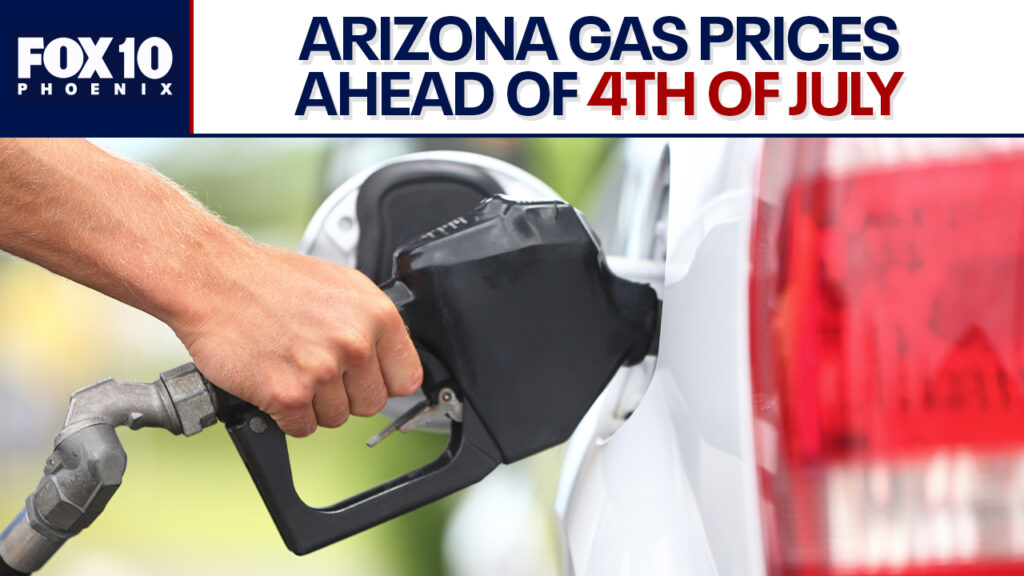As the Fourth of July holiday weekend approaches, drivers across the United States are greeted with an unexpected relief at the pump. Gasoline prices have dropped to their lowest levels since 2021, providing a welcome reprieve for those planning to travel. This decrease in fuel costs comes at a crucial time when millions are expected to hit the road for celebrations and vacations.
The decline in gas prices is attributed to a combination of factors, including increased oil production and a stabilization in global energy markets. According to the latest data from the Energy Information Administration, the national average for a gallon of regular gasoline has fallen to $3.10, a significant drop from the $4.50 peak seen last summer.
Factors Behind the Price Drop
The recent dip in gas prices can be largely credited to an increase in domestic oil production. The U.S. has ramped up its oil output, reaching levels not seen since before the pandemic. This surge in production has helped offset global supply constraints and has contributed to the stabilization of prices at the pump.
Additionally, the easing of geopolitical tensions, particularly in oil-rich regions, has played a role in calming the energy markets. The resolution of certain trade disputes and a more predictable global economic outlook have also contributed to the current state of affairs.
Impact on Consumers and the Economy
For consumers, the drop in gas prices translates to more disposable income and the ability to spend more on other goods and services. This is particularly beneficial during the holiday season, when travel and leisure activities are at their peak. According to AAA, an estimated 43 million Americans are expected to travel by car over the Fourth of July weekend, a 5% increase from last year.
“Lower gas prices are a boon for consumers, especially during peak travel seasons. It allows families to allocate more of their budget towards experiences and activities,” said John Smith, an economist at the National Retail Federation.
The broader economic implications are also noteworthy. Lower fuel costs can help reduce inflationary pressures, providing a boost to consumer confidence and spending. This, in turn, can stimulate economic growth, particularly in sectors such as retail and hospitality.
Historical Context and Future Outlook
The current trend in gas prices is reminiscent of the situation in 2019, when a similar combination of increased production and geopolitical stability led to a significant drop in fuel costs. However, experts caution that the situation remains fluid, and prices could fluctuate based on a variety of factors, including potential disruptions in supply chains or changes in international relations.
Looking ahead, analysts are keeping a close watch on the Organization of the Petroleum Exporting Countries (OPEC) and their production decisions, which could have a significant impact on future price trends. Additionally, the ongoing transition towards renewable energy sources and electric vehicles may also influence long-term demand for gasoline.
By the Numbers: As of June 2023, U.S. oil production has reached 12.5 million barrels per day, nearing the pre-pandemic high of 13 million barrels per day.
In conclusion, while the current drop in gas prices is a positive development for consumers and the economy, it is important to remain vigilant and adaptable to changes in the global energy landscape. For now, drivers can enjoy the benefits of lower fuel costs as they embark on their Fourth of July travels.
About The Author
 Gas Prices Drop to Lowest Since 2021 Ahead of July 4th Holiday
Gas Prices Drop to Lowest Since 2021 Ahead of July 4th Holiday Black Sabbath Honored with Freedom of Birmingham Before Final Show
Black Sabbath Honored with Freedom of Birmingham Before Final Show Anna Wintour Shines at Marc Jacobs Show After Vogue Departure
Anna Wintour Shines at Marc Jacobs Show After Vogue Departure Travis Kelce Reveals Challenges of Hosting ‘SNL’: A Behind-the-Scenes Look
Travis Kelce Reveals Challenges of Hosting ‘SNL’: A Behind-the-Scenes Look Rob McElhenney Stands Firm Amid Backlash Over Name Change to ‘Rob Mac’
Rob McElhenney Stands Firm Amid Backlash Over Name Change to ‘Rob Mac’